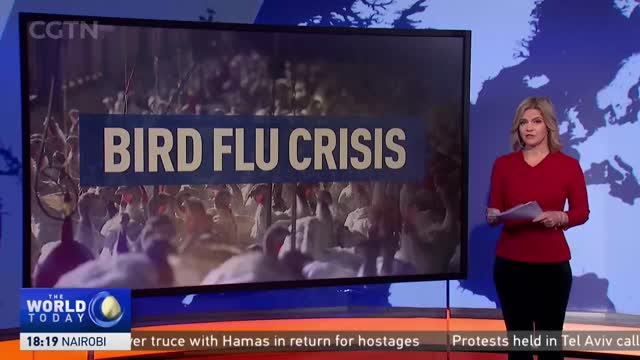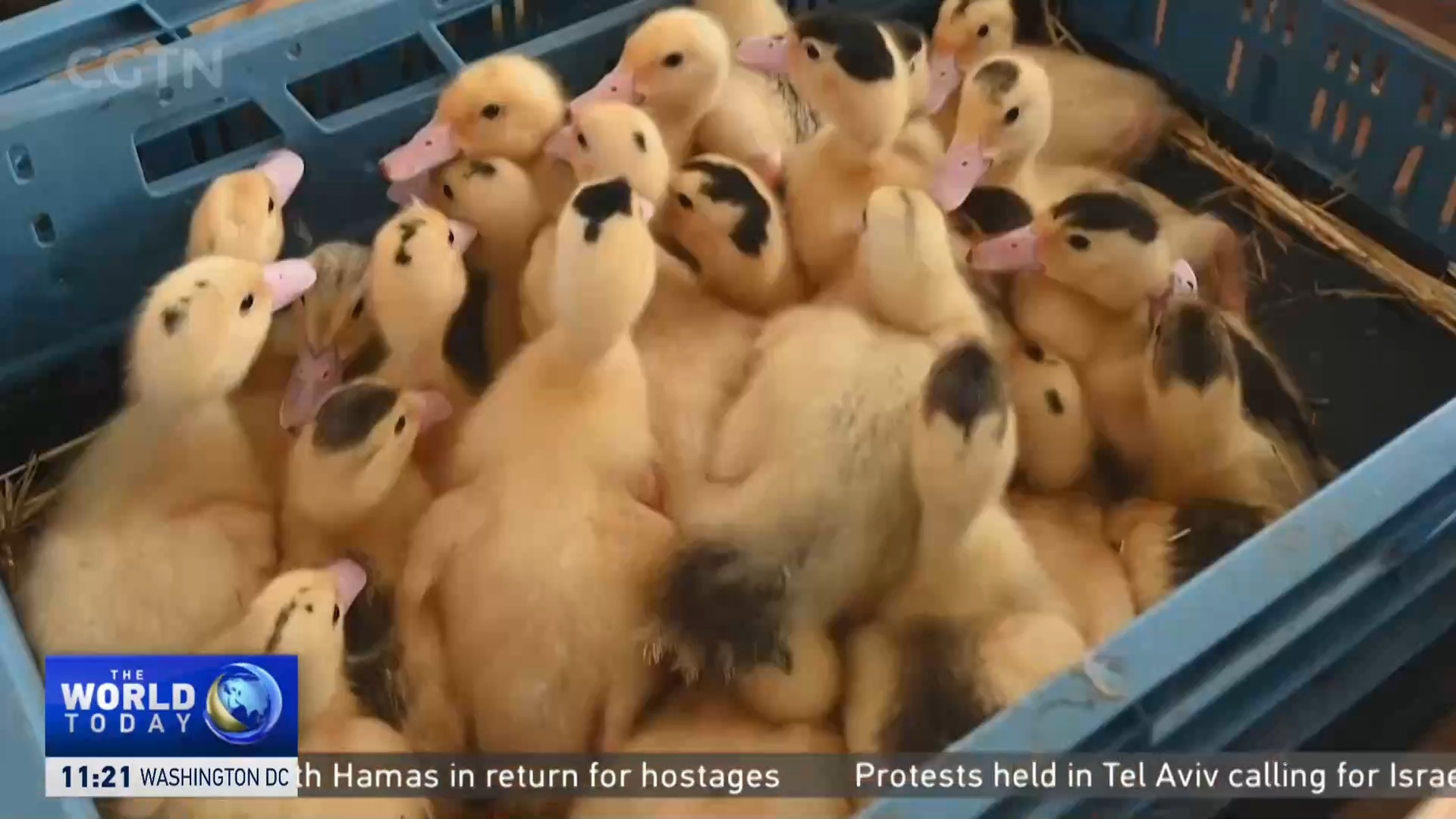01:08

Germany, Poland and Belgium are among the latest European countries to report outbreaks of avian influenza – more commonly known as bird flu. The highly contagious viral disease has led to the culling of hundreds of millions of birds globally.
The H5N1 virus, the most prevalent strain of bird flu, was first reported in China in 1996. But the strain currently circulating globally is an extremely dangerous subtype of H5N1, which emerged in Europe in 2020.
Bird flu appears to have arrived later in Europe this year because a warmer autumn has meant that wild birds have migrated later. They are the main carriers of the virus.
READ MORE
Latest Israel strikes kill dozens as U.S. urges ally to scale down
Lost and Found: Difficult road ahead for boy who went missing
Rising number of Swiss farms switch from livestock to plants
According to research by the European Food Safety Authority, the European Centre for Disease Prevention and Control, and the EU reference laboratory, an increase in outbreaks usually appears in October but this year the rise only took place from November.
Countries have been employing various strategies to try and bring outbreaks under control. France has opted to try vaccination, aiming to vaccinate 60 million birds. The campaign, which began in October, is focused on ducks because they easily transmit the virus without showing symptoms.
Pros and cons of using vaccination
But France recently raised its bird flu alert to high, after new cases of the disease were detected. There are also concerns that vaccination could mask its circulation and lead to countries buying infected meat from poultry suppliers
Gregorio Torres, Head of Science at the World Organization for Animal Health says vaccination can be an effective strategy but not in isolation.
"We all know that vaccination by itself is not the only tool that needs to be used, it's not a silver bullet as we tend to say," Torres told CGTN Europe.
"Vaccination can definitely be a complementary tool that can have an impact, that can definitely help to control to the disease but it also needs to be accompanied by other disease control strategies such as biosecurity, early detection and movement control and in particular surveillance," he added. "We encourage countries to study and to better understand the pros and cons of using vaccination."
There are a lot of factors that need to be included in the equation to find the best strategy.
- Gregorio Torres, Head of Science at the World Organization for Animal Health
Scientists in the UK have successfully used gene editing techniques to limit the spread of bird flu in chickens. In the research by Imperial College London and the University of Edinburgh's Roslin Institute, the birds had small alterations to one gene and became partially resistant to bird flu. But as infections were not completely blocked, further and more robust gene edits will be required.
A major ecological disaster
So, what do scientists think is the best way to get the outbreak under control?
"Unfortunately there is not a single answer to this question," Torres explained. "I wish there could be just one single solution for all the problems.
"The epidemiology of the disease is extremely complex and we need to have a good understanding of the dynamic of the disease... there are a lot of factors that need to be included in the equation to find the best strategy."
He added that we need to "ensure there is a separation between the different sorts of infection, for example, a separation between domestic and wild birds."
02:48

Bird flu has also infected some animal populations, with thousands of sea mammals recently dying in Brazil from the virus. Infections in mammals led the World Health Organization to warn that while the risk to humans currently remains low, that could change in future as the virus mutates.
Since 2003, there has been less than 1,000 cases in humans. But when transmitted, it can be deadly – with 53 percent of the 868 cases recorded proving fatal.
In October, bird flu was found in Antarctica for the first time, which means that Oceania is the only continent that has not been touched by the virus, at least not yet.
Meanwhile, the outbreak in Antarctica is of particular concern. The virus was first reported in brown skua birds but hundreds of elephant seals have died since then. Researchers have warned that if it reaches remote penguin colonies, it could bring what they call "one of the largest ecological disasters of modern times."

Subscribe to Storyboard: A weekly newsletter bringing you the best of CGTN every Friday